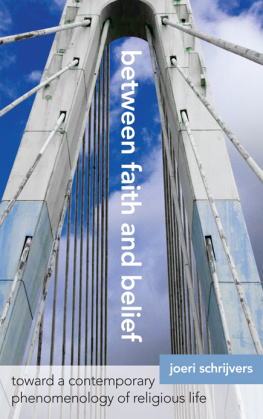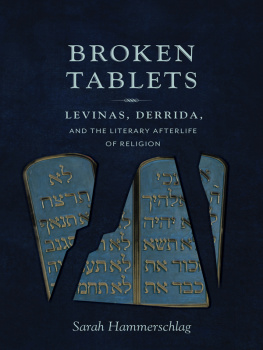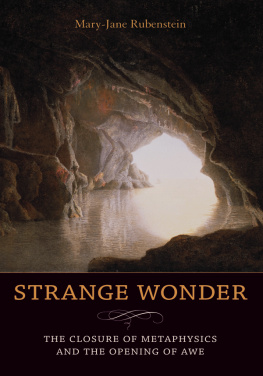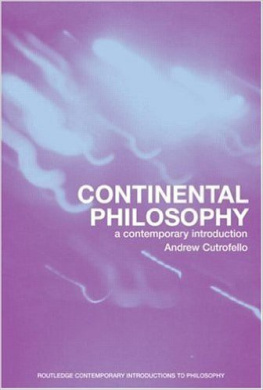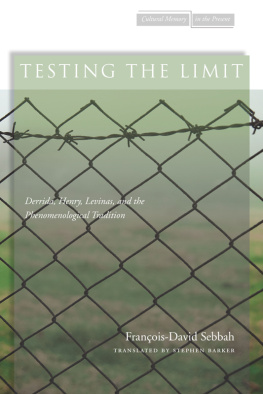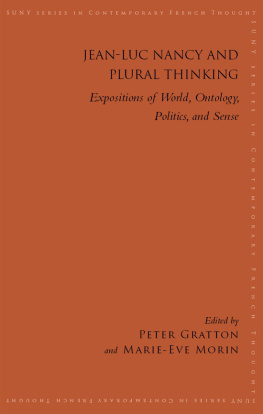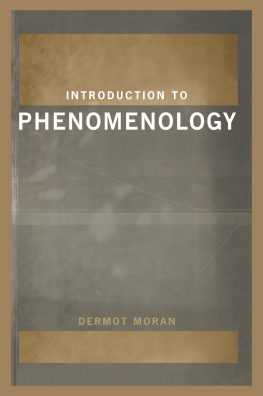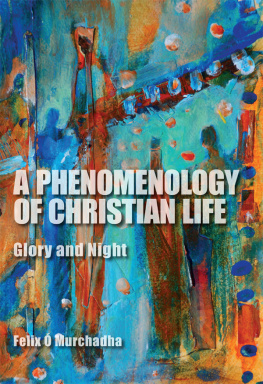Between Faith and Belief
SUNY series in Theology and Continental Thought
Douglas L. Donkel, editor
Between Faith and Belief
Toward a Contemporary Phenomenology of Religious Life
JOERI SCHRIJVERS
Cover image: Bridge, by Sara Mina C.
Published by State University of New York Press, Albany
2016 State University of New York
All rights reserved
Printed in the United States of America
No part of this book may be used or reproduced in any manner whatsoever without written permission. No part of this book may be stored in a retrieval system or transmitted in any form or by any means including electronic, electrostatic, magnetic tape, mechanical, photocopying, recording, or otherwise without the prior permission in writing of the publisher.
For information, contact State University of New York Press, Albany, NY
www.sunypress.edu
Production, Eileen Nizer
Marketing, Michael Campochiaro
Library of Congress Cataloging-in-Publication Data
Names: Schrijvers, Joeri.
Title: Between faith and belief : toward a contemporary phenomenology of religious life / Joeri Schrijvers.
Description: Albany : State University of New York Press, 2016. | Series: SUNY series in theology and Continental thought | Includes bibliographical references and index.
Identifiers: LCCN 2015016595 | ISBN 9781438460215 (hardcover : alk. paper) | ISBN 9781438460239 (e-book)
Subjects: LCSH: Religious life. | Philosophy and religion.
Classification: LCC BL624 .B4644 2016 | DDC 200dc23
LC record available at http://lccn.loc.gov/2015016595
10 9 8 7 6 5 4 3 2 1
Contents
Acknowledgments
contains elements of my essay on Marion in Willie Van der Merwe and W. Stoker (eds.), Looking Beyond? Shifting Views of Transcendence in Philosophy, Theology, Art, and Politics (London: Brill-Rodopi, 2012), pp. 157172.
I would like to thank Professor William Desmond, who was so kind to read earlier versions of this work, and Professor Willie van der Merwe for enabling me to complete this book in proper fashion at the VU University Amsterdam. A word of gratitude to Professor Lieven Boeve and my other colleagues of the research group Theology in A Postmodern Context at the Faculty of Theology and Religious Studies (KU Leuven), especially Dr. Justin Sands, Dr. Patrick Cooper, and Drs. Bradford Manderfield for the hospitality with which they have greeted my work. Thanks to Nancy, Doug, Eileen, and Laura at SUNY Press for the opportunity to publish in this great series. Finally, a special thanks to Sarah Mina C, my wife, for the cover art.
Introduction
Between Faith and Belief. Toward A Contemporary Phenomenology of Religious Life is, in its own way, a long response to Reiner Schrmanns question What is to be done at the end of metaphysics? once being is unhinged from God. Each chapter corresponds to an author under discussion and in effect delineates what is to be done after metaphysics in general and what might be the fate of religion and transcendence in our secular world. The question of metaphysics, which is considered here as the question concerning ontotheology, can be seen as a question of hubris. It is the hubris of the human being pretending to come up with a transcendental signifier that totalizes and unifies human existence (or even being/s in general) in its entirety and so provides existence with an arche and telos from which there seems no escape.
This book primarily wants to communicate its enthrallment with Binswangers thinking of loves presencing. It wants to move out of sterile debates of endless deconstructions, of a certain all too certain phenomenology. The main thesis of the book is that, with a great many of contemporary thinkers (traditions are important), we should stand up and not think of this world, its finitude, and its politics as mere world, mere finitude, mere politics, mere tradition, and mere capitalism. Something transcends all this, and we know not what. This difference, we think, between faith and belief, between finitude and mere finitude, is all a contemporary and secular phenomenology of religious life seeks to install.
The General Introduction to this book offers the contours and contexts necessary to understand the contemporary debate around the remainder of God and Christianity after metaphysics as well as the state of continental philosophy after deconstruction by aligning the significant voices of these debates alongside one another.
Between Faith and Belief is divided in three parts, each of which can be read separately. The General Introduction provides an overview of the argues that such a rupture is simply too bold to be true and argues for the necessity of tradition through mediations and small steps of change, evolution rather than revolution: Christianity will be part of the change and the evolution rather than just put aside.
, Between, considers the spiritual inclinations of Jacques Derridas deconstruction. It does this by staging the debate between John D. Caputo and Martin Hgglund, who has argued that there is no such strand in Derrida, and between Caputo and Jean-Luc Marions recent theological writings on love. Just as much as the first part tries to show that one cannot do without metaphysics or Christianity, the second part of this book argues that, in similar ways, one cannot have a religion without religion, as Caputo famously defines the religious strand of Derridas deconstruction. This book, furthermore, derives its title not only from a greeting that Jean-Luc Nancy imparted in my copy of one of his works, but foremost from the fact that the faith without belief that Caputo and Nancy are seeking shows itself to be phenomenologically impossible. One attains such faith only from the various beliefs, and it is, inversely, never certain whether such an originary faith is entirely without the beliefs from which it arose in the first place. Hence this position: between faith and belief.
The conclusion of cannot be reduced to a nihilistic anything goes. I will show that Caputo would actually be very close to Derrida (and to Levinas) when arguing that one can never reduce the politics (of hospitalities, of Christianities, etc.) to just that , to just politics: for within the troubles one has to be hospitable to all the others and the small preferences one has for this singular other rather than another other, there is a responsibility to reinvent the conditions of the possibility of such politics constantly. It is this responsibility that, for Derrida, moves in other ways than those of being. This is what he takes from Levinas and what Caputo takes from both of these thinkers. However, Derrida will move away from Levinas when arguing that these constant revisions and reinventions of our responsibilities are not regulated by whatever ideal one can imagine: there is no way of proving and guaranteeing that a new form of responsibility will be better than the previous one. If there is hope in Derrida, it is that this reinvention of responsibility will be less bad than other forms of responsibility. In reality, there is no regulative idealthere is no such thing as the least bad form of hospitalitybut there is something like an inclination or ontological tendency, if you will, to rephrase, reiterate, and reinvent our ways and manners of being responsible for all.
It is here that Caputo quietly moves away from Derrida and embraces Levinas in order to dodge these very empirical conditions into which we are lodged. Caputos dream of God (which is a sort of imaginary variation of what all of the traditions used to call God) is, as Hgglund rightly points out, still plagued by seeing in this God (who does not exist but insists, as Caputo has it) some sort of totalizing instance that keeps the balance between what is conditional and what is unconditional firmly in check. Caputo aligns himself with Levinas so as to make sure that the tears unseen by the civil servant (Levinas) are at least seen by God.

